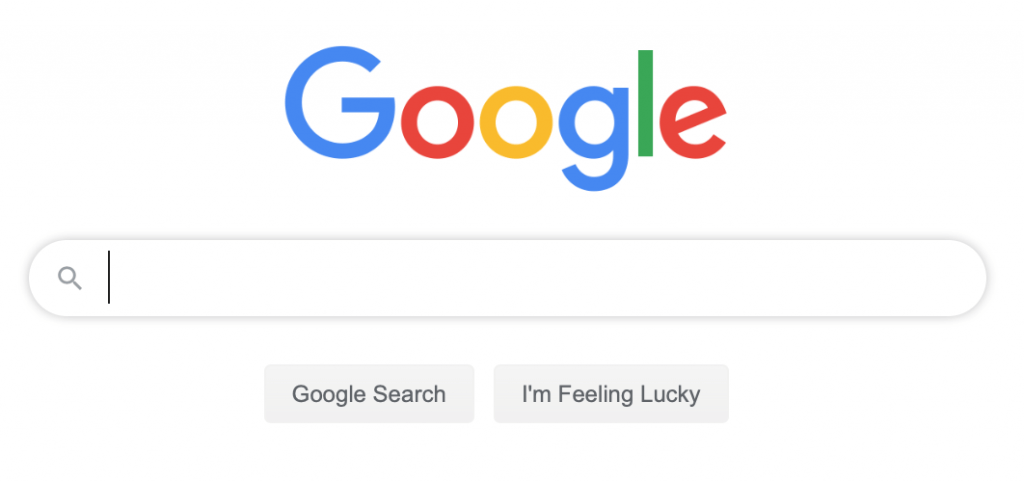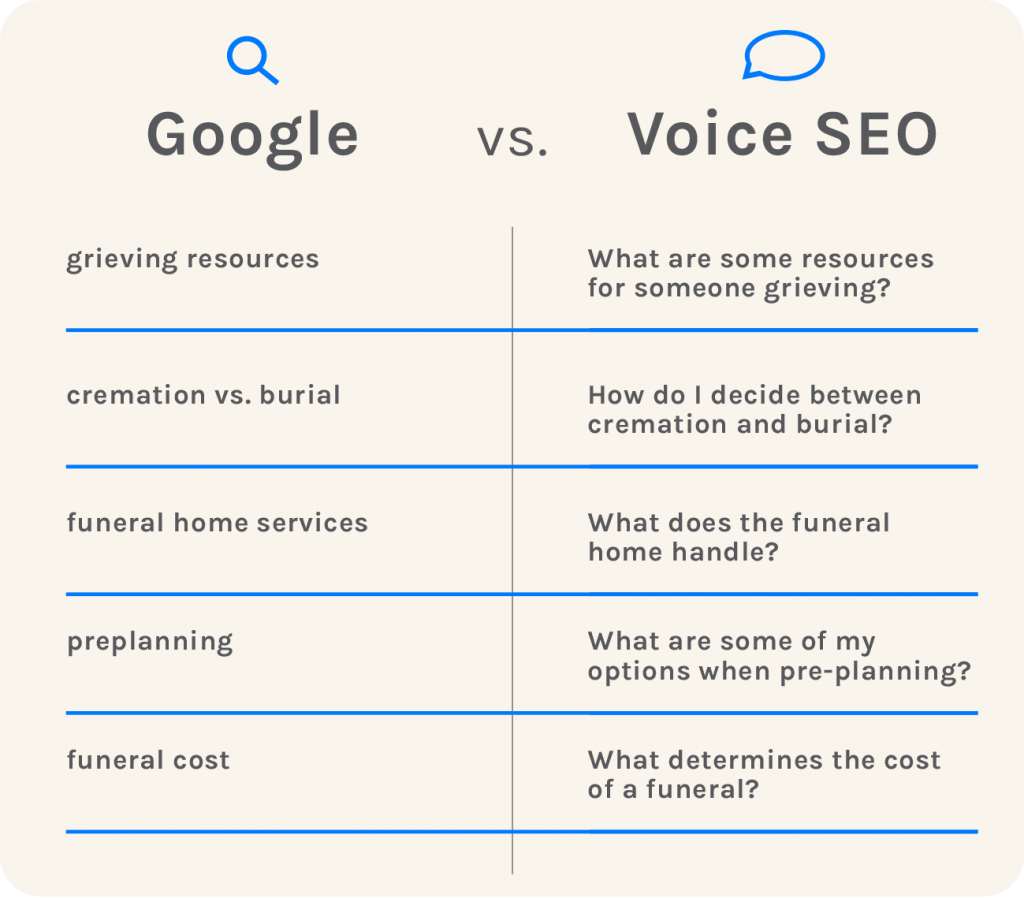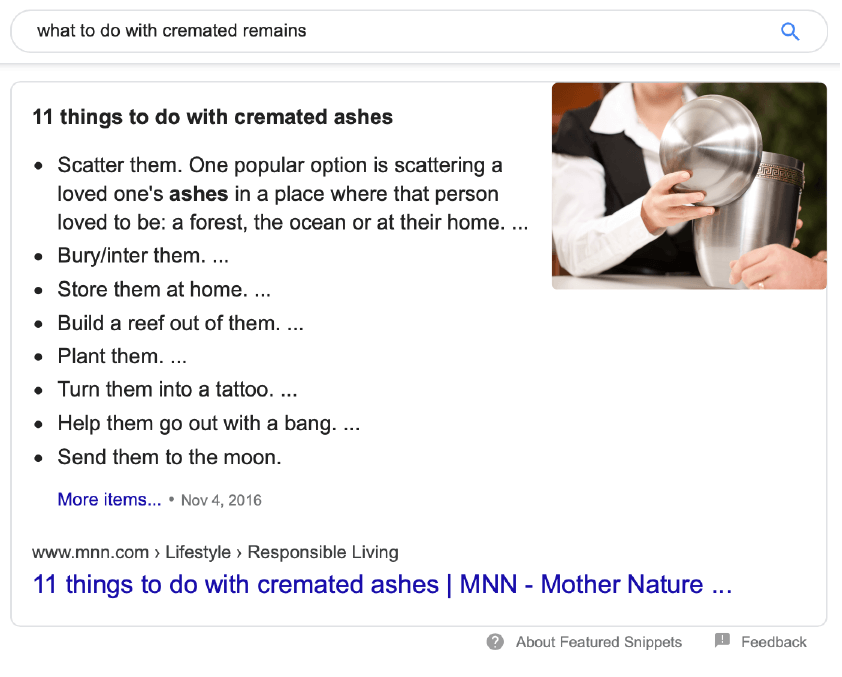In today’s age of technology, the easier and more convenient we can make something, the more likely it is people will take advantage of it. Today’s customers expect online shopping to be easy, convenient, and fast. In fact, the more “clicks” a person must make to complete an action, the fewer people actually complete said action.
So it’s no surprise voice SEO is catching on.

Voice SEO is searching for something using your voice and a digital assistant. Think, “Hey Siri” or, “Hey Alexa.” Voice search is easy. People use today’s voice assistants to answer many questions: “Alexa, what is Bill Gates’ net worth?” “Hey Siri, how much are Rick Springfield tickets?” “OK Google, what are the best family restaurants near me?”
Google has 92.42% of the search engine market share worldwide and 20% of Google’s mobile queries are voice searches. Assistant devices, TVs, computers, tablets, home appliances, cars and more are all using voice search technology. And voice assistants such as Google Assistant, Apple’s Siri, Microsoft’s Cortana, or Amazon’s Alexa are being used every day. It’s time your firm integrates voice search in your SEO plan.
What is Google Voice Search?
 With the growth of voice search, your families are now asking Google their questions rather than typing them. Users can either say “OK Google” or tap the microphone to the right of the search bar and ask Google any question. Your firm can use the following info to enhance your SEO plan and increase visibility to at-need families.
With the growth of voice search, your families are now asking Google their questions rather than typing them. Users can either say “OK Google” or tap the microphone to the right of the search bar and ask Google any question. Your firm can use the following info to enhance your SEO plan and increase visibility to at-need families.
How does voice SEO work?
Knowing how people search when they type versus. how they search when they use voice-assisted devices will help you understand how to make an effective SEO strategy.
When typing a search, someone might type, “Popular hikes Colorado.” Note that this is not a complete sentence nor is it a question. However, when people do a voice search by asking Google a question, they are much more likely to say, “OK Google, where are the best hikes located in Colorado?”

Notice when asking Google, the search is much more conversational. More question oriented and long-tailed versus when it’s typed when it’s short and straight to the point. For voice SEO, the longer the keyword phrases are on your website, the more likely Google is to display your firm at the top of the results, along with other factors we will go over below.
With an eye to voice SEO, users can find the best information for their search query as quickly as possible and your firm can increase brand awareness as well as the amount of at-need calls you receive. Of course, you should be using Google Ads and other digital marketing techniques, too.
How can your firm make effective use of voice SEO?
- Capture your local audience.
22% of searches are local searches. Expand your paid search keyword lists to include:
- “Near me”
- “Near [major cities near you]”
- “Near [landmark near you]”
- Create blog posts answering your families’ questions
Think of questions you have been asked about your work or questions at-need families have asked you.
“Where can I find funeral planning resources?”
“How do I decide between cremation vs burial?”
“What does the funeral home handle?”
“What do I need to do after someone dies?”
Think of at least 12 questions you are typically asked. Write blogs to answer each one and then you will have a blog post for every month of the year. Not only will that help you create content, but it will increase your chances of being featured in Google’s Featured Snippet in the search results.
 Featured Snippets are included in 30% of Google queries. Featured Snippets appear as a box of information that presents itself organically at the top of Google’s search results in order to provide an immediate answer to the user’s search.
Featured Snippets are included in 30% of Google queries. Featured Snippets appear as a box of information that presents itself organically at the top of Google’s search results in order to provide an immediate answer to the user’s search.
Can you make Google show your snippet?
You cannot choose for Google to pick your site for a snippet. Google systems determine whether a page would make a good Featured Snippet for a user’s search request, and if so, elevates it. But there are ways to increase your chances of having it shown. In order to be featured in a Google snippet, your firm must be on the first page of Google’s results. Next, use your blogs to include snippets that can be featured. Your content must be easy for Google to read, so make use of bulleted lists, tables, and hashtags. Make sure the snippet features an answer to a question while also giving brand recognition or something enticing to click on your website.
- Type like you speak.
Increase your chances of appearing in a voice search by incorporating the following into your SEO strategy:
- Descriptive, long-tailed keywords
- Question words like “how”, “what,” “who,” “when,” “can, “where,” and “why”
- Conversational, filler words like “the,” “to,” “for,” “of,” and “on”
- Put yourself in your families’ shoes and think of what they would ask Google when looking for end-of-life services
- Make sure your site loads quickly
Google prioritizes websites that load quickly. Meaning, having a slow, unresponsive website could be costing your firm a better search ranking on the most used search engine. As a rule of thumb, your website should load in under 3 seconds.
Smartphone traffic exceeds desktop traffic so make sure your site has a mobile responsive design. Google has tools that allow you to test URLs; try Google’s Mobile-Friendly Test Tool and Think with Google. It also never hurts to give your website a look over to ensure images load correctly and no links are broken.
Voice search is coming to the funeral industry. Be sure you’re ready to make the most of it using the techniques above. If you need help getting your website SEO ready or want to capitalize on Google Ads to get noticed, reach out to us at info@funeralinnovations.com or give us a call at 800-641-0173.



